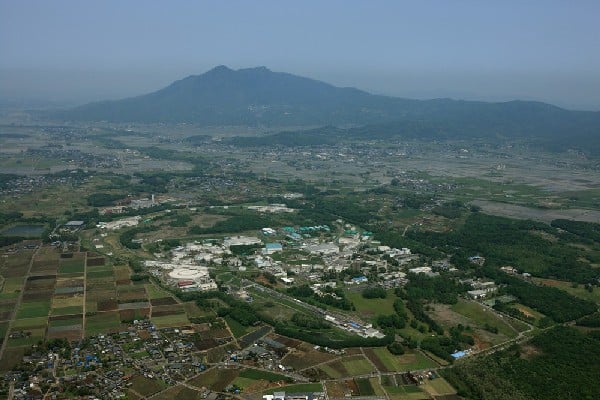
Researchers in Japan are expressing concerns that their research funds could be cut in half – or possibly even terminated – following the government’s decision to slash over $35bn from next year’s budget. A number of research labs in the country, including the Spring-8 synchrotron in Hyogo and the KEK particle-physics lab in Tsukuba, could see large cuts to their research budgets next year that, they say, would threaten the county’s competitiveness in science.
In a statement issued yesterday, Atsuto Suzuki, director general of KEK, said that it could take “years” for the country to recover from the cuts. “Neglect of the importance of fundamental research could result in a long-term stagnation of our national competitiveness,” he says.
The problems have been brewing since early November, when the new Japanese government, elected in August, announced plans to slash next year’s budget, which begins in April 2010. Some suggest the budget cuts are because the new government – led by Prime Minister Yukio Hatoyama from the Democratic Party of Japan – promised during the election campaign to make it free for students to attend public high schools. Such schools currently charge tuition fees and are not compulsory to attend even though most of the population do so.
If the government starts slashing funds it really hurts Japanese science and its credibility Hitoshi Murayama, University of Tokyo
However, this pledge significantly adds to the budget of the Ministry of Education, Culture, Education, Science and Technology (MEXT), which is dominated by elementary and middle school education. As a result, MEXT is seeking to cut its expenditure elsewhere, which means that science could be in the firing line.
In early November the Japanese government set up working groups to re-evaluate around 400 ongoing research projects in the country as well as university budgets for next year. These working groups report to the Government Revitalization Unit (GRU) – an 11-member panel chaired by Hatoyama himself) – that is mostly made up of politicians, industry leaders and a few academics.
This arrangement has caused concern in the scientific community that they are not being properly represented when deciding the fate of their projects. “We scientists do not have any opportunity to defend our programmes,” says Hitoshi Murayama, director of the Institute of the Physics and Mathematics of the Universe (IPMU) at the University of Tokyo and one of the leaders against the proposed budget cuts.
Worrying times ahead
The working groups have now evaluated the 400 projects and budgets for universities. “Only very few came out unscathed,” says Murayama. “Most of them were recommended for reduction, and quite a few for near termination.” Among those earmarked for cuts are the Spring-8 synchrotron in Hyogo, which could see its budget slashed by a third to a half, as well as no money going towards what would be the world’s fastest supercomputer to be built at the RIKEN lab.
At the end of November four Nobel laureates, including Makoto Kobayashi from Kyoto University, who shared the 2008 Nobel Prize for Physics with Yoichiro Nambu and Toshihide Maskawa for their work on broken symmetry in particle physics, took the unprecedented step of criticizing the government’s plan to cut the research budget. The laureates called on the government to listen to scientists when deciding to allocate funding for research projects.
Things were made worse in late November when the GRU finished looking at the overall budget for universities and national laboratories, like the KEK particle-physics lab in Tsukuba and the J-PARC experimental complex in Tokai. Although the GRU proposed having another review about the regular operating budget for personnel and infrastructure at universities, 50% of the members of the GRU voted to terminate the operating budget for projects such as the Superkamiokande neutrino experiment at J-PARC, the B-meson factory at KEK and Japan’s involvement in the Subaru optical and infra-red telescope in Mauna Kea, Hawaii.
Research concerns
Murayama is also concerned about the threat to the IPMU. The institute is part of Japan’s World Premier International Research Center Initiative (WPI programme), which founded five institutes from nanoscience to immunology in 2007 to attract researchers from abroad to work in Japan. The five institutes are funded for 10 years and each receive $10m per year and Murayama is bracing himself for 50% cuts to the WPI programme.
As the IPMU’s costs mostly go on salaries, this could potentially mean cutting staff numbers in half. “Previously there had not been many jobs for non-Japanese scientists,” says Murayama, “so this hurts the case for science in Japan.”
Negotiations will now take place in the Ministry of Finance with a finalized budget for 2010 set to be made at the end of December. “I am very worried at the moment,” says Murayama. “If the government starts slashing funds it really hurts Japanese science and its credibility.”



